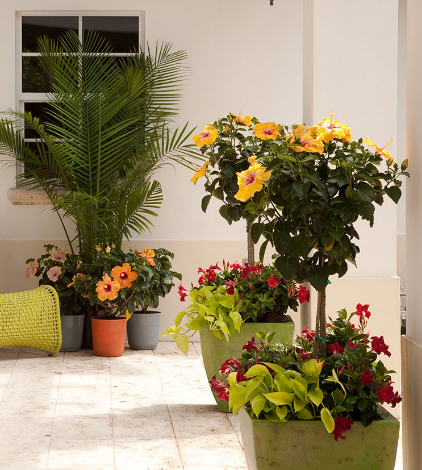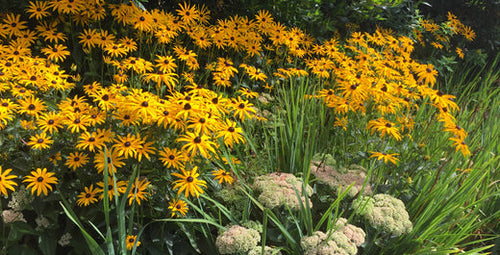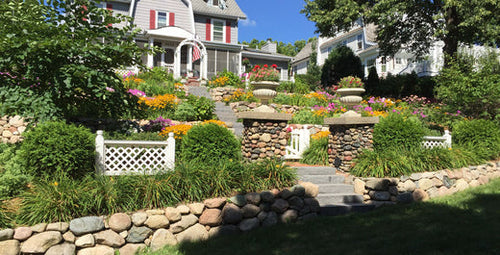By Justin Hancock
If you say your favorite garden style is the English cottage look, you’re not alone. No matter where I’ve lived, from Minnesota to Miami, folks have commented that the look they like is that full, lush, English cottage garden. As a garden designer, I’ve created dozens. Here are some of my tips you can use to create a cottage garden of your own.
 Be Relaxed About It
Be Relaxed About It
Part of the cottage appeal is that there’s a natural sense to it. Most cottage gardens don’t look overly designed. Rather, they have a relaxed, informal feel. I’m not particularly fussy about what plant goes where. In fact, sometimes I place plants randomly and then fill in around them. End up with a tall plant in front of a shorter one? No worries in a cottage garden!
To get the lush, overflowing look, don’t be afraid to put some plants right up against a pathway or bed edge. I like using traditional favorites include catmint, lavender, perennial geranium, and peony; in warmer climates, I look to plants like elephant ear, plumbago, and annual vinca. Another way to get the look is to put some plants close, so they grow together and intermingle their colors and textures.
Mix Textures
In a cottage garden you often see a variety of different textures. I always plan for some bushy plants such as coneflowers, cosmos, daisies, lantana, pentas, and yarrow; some low, creeping plants such as ajuga, dianthus, evolvulus, sweet alyssum, thyme, and creeping veronica; and top it off with tall, spiky plants such as delphinium, foxglove, hollyhock, iris, liatris, and salvia. Wispy plants such as baby’s breath, fountain grass, gaura, and pink muhly grass are perfect for completing the look.
 Accessorize
Accessorize
While cottage gardens are usually all about the plants, there are certain accessories that can help to get the look. The most iconic is perhaps a white picket fence (which is perfect for hosting a scrambling vine such as clematis, climbing roses, allamanda, or bougainvillea). Brick, flagstone, and gravel pathways also complement cottage gardens, as do other garden structures such as obelisks, ornate trellis panels, and birdbaths.
Keep in mind these are just guidelines. There aren’t really rules that dictate what makes a cottage garden. Just plant what you love so your garden suits your personal style.
















